Indian history from Indus Valley civilisation to Modern history
Indian History – from Indus Valley civilization to Modern history
Indian history is a long story. We haven’t preserved the remnants of this history too well though. Sometimes, we have to piece things together to get a clearer picture. And why not? How can everything be ready on the plate? Humans have to use their intellect to weave everything together.
Indus Valley civilization – ancient Indian history
The first known civilization took roots in the Indus valley around 6500 BC. The remains of this civilization have been excavated from Gujarat and parts of Pakistan. This probably implies that the civilization straddled the Western part of India and today’s Pakistan. By 2600 BC, it was a prosperous civilization, which knew farming, pottery, animal husbandry, and weaving.
The writings of this civilization have been discovered but not decoded. Hence, not much is known about the political system. The civilization either was destroyed by invaders, or got cleansed due to some epidemic or natural calamity. The reason is not known and the remains of the civilization were discovered only during 1920s.
Arrival of the Aryans – Huge impact on Indian history
Whether the Indus valley civilization was overpowered by the Aryans, is not clear. The Aryans were from Central Asia and entered India through Afghanistan. As a result, the course of Indian history was changed forever. They were perhaps semi nomadic tribes then. However, gradually they learnt farming and other skills. A more stable society started evolving – from tribes to Kingdom. It is believed that the Vedas were created during this time. Hinduism started becoming the key religion.
Whether Hinduism already existed or evolved during this period is not clear. The Hindu mythological stories date back to 3000 BC. The Buddha was born around 483 BC. He grew up to start a new practice called Buddhism.
This was also the era when the invaders from the other countries started entering India. For instance, the Persians were followed by Alexander. However, they did not impact the Indian society or Indian history much. Even Alexander the Great retreated and died of malaria while returning.
The Maurya Dynasty – the first powerful, centralized kingdom in Indian history
The Mauryan Empire is the first kingdom which has proper records in Indian history. It became the first powerful and centralized Kingdom of India. The capital was one of the largest cities in the olden times. As a result, there was an active trade relationship with the neighboring countries. Chandragupta Maurya I founded this dynasty. Ashoka, his grandson, took it to its zenith.
After the war of Kalinga, Ashoka renounced violence and became a practicing Buddhist. His children Mahendra and Sanghamitra traveled to different parts of India and Sri Lanka to spread Buddhism. The Maurya dynasty started declining after Ashoka. This was because of infighting and lack of good leaders.
There were more intrusions from Central Asia and the Greek rulers of Afghanistan. However, not much of a European influence is seen. The Central Asian nomads established the Kushan dynasty and ruled for around a century.
The Gupta Dynasty – the Golden era of Indian history
Around the early 4th century AD, the Gupta dynasty started taking roots in India. Chandragupta founded this dynasty. His son Samudragupta ruled next. His period is the Golden era of Indian history. He had conquered the whole of North India and a big chunk of Central India. India was prosperous and used to engage with neighboring countries like China. Peace and prosperity came over the land. As a result of this, mathematics, astronomy, medicine and literature flourished during this period. Kalidasa, the great poet, lived in this age. The Gupta dynasty disintegrated by the 6th century AD. After this era, there was no major empires in North and Central India.
The invasion from Central Asia continued with the Turks, Huns and others. Whether it was the Indus valley civilization or the Aryan, their geographical footprint was not across the whole of India. There were other flourishing kingdoms down south. King Pulakesin (6th Century AD) was a powerful king who resisted all the attacks by his north Indian counterparts.
The Cholas – South Indian history
By the 10th century AD the Chola King Rajaraja I began to expand his kingdom in the south. He took over Sri Lanka, the Maldives and the Andaman Islands. The Chola kingdom became a prosperous one through trade and war. For instance, it was actively involved in trade with Southeast Asia and the Arab countries.
The Rise of the Mughal Empire – another change in the course of Indian history
Babur and Humayun
Babur (1483-1530) founded the Mughal dynasty in India. He was a descendant of Genghis Khan and was the ruler of Afghanistan. Babur defeated Ibrahim Lodhi in the 1st battle of Panipat and gradually ruled the northern part of India. His son, Humayun, had a few setbacks and remained in exile for a couple of years. Humayun then captured the north of India again. After his accidental death, his son Akbar took over.
Akbar and Jehangir
Akbar became the greatest Mughal ruler. He expanded his territory till Gujarat towards the west, Bengal in the east and Kashmir in the north.
Akbar was a connoisseur of the arts and literature. He was respectful of different religious faiths. Many art forms thrived during his rule. After Akbar, his son Jehangir became the ruler of the Mughal Empire. He expanded his influence in some of the southern states.
Shah Jahan and Aurangzeb
Shah Jahan, who had built the Taj Mahal as a memorial for his wife rule the kingdom for around 30 years. His son, Aurangzeb conquered a lot of the southern states.
Bahadur Shah and the decline of the Mughals
Bahadur Shah succeeded Aurangzeb. He was a reluctant ruler from 1707-1712. As a result, rebels cropped up across the state. Powerful nobles started breaking away from the kingdom to form independent states.
There was constant fighting with the Marathas in the west and Afghans in the north. As a result of this, the Europeans found an opportunity to establish their colonies in India. The Portuguese, Dutch, French and the British came into the country. By the late 17th century, the British East India company had taken deep roots across the country.
Beyond the regular known Indian history
This was the history which is mostly known to everyone. However, as I said before, Indian history was spread across the ocean, rivers, mountains and plains. For instance, here are some of the stories from Indian history. They are different, but interesting.
Ahom Dynasty of Assam
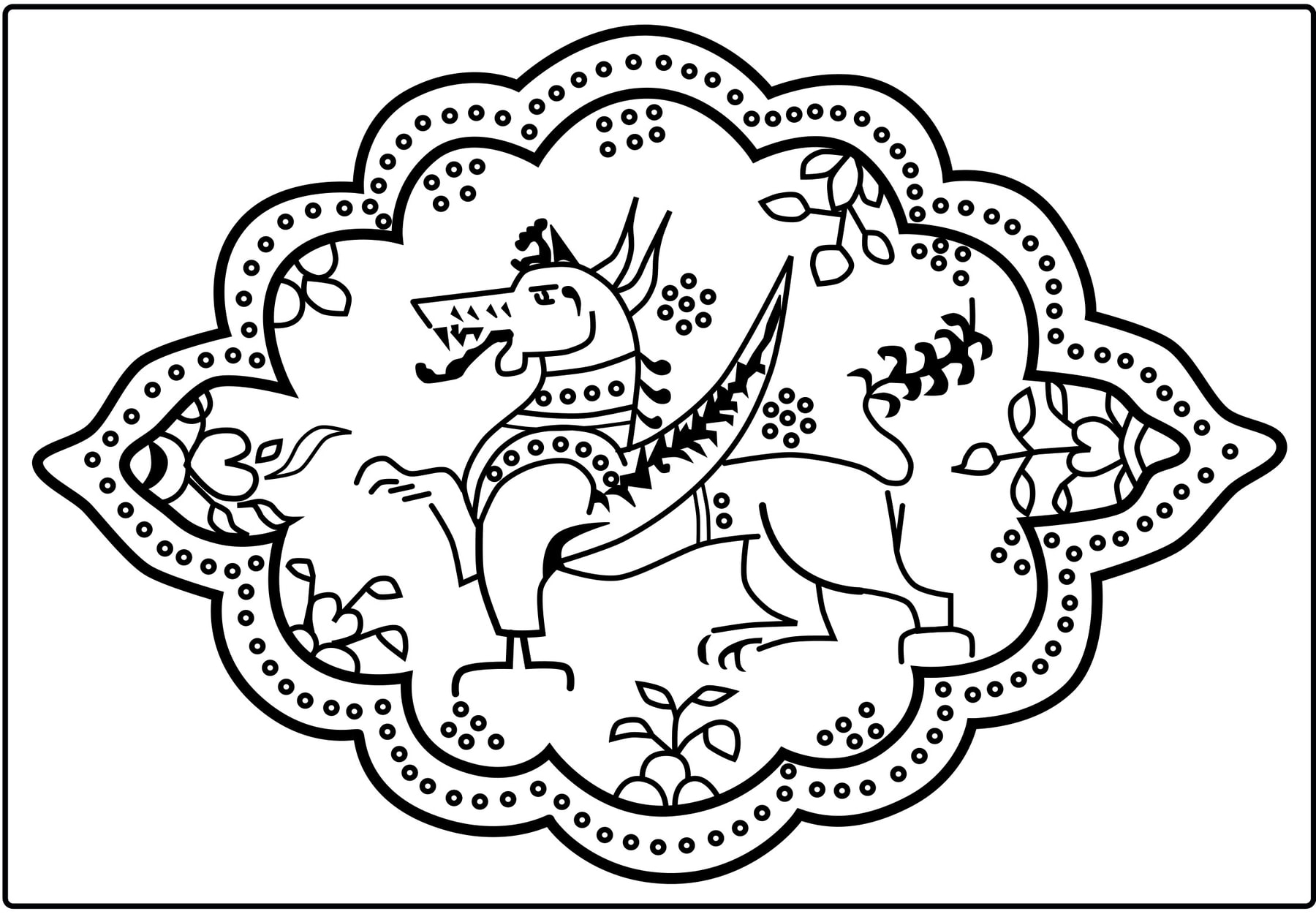
The Ahom dynasty is the longest ruling dynasty of India. Did you know about the longest running dynasty of India? What made the Ahom dynasty of Assam prosper for almost 600 years ? Intrigued ? Read more about the Ahom dynasty of Assam .
Kumbalgarh Fort , Rajasthan
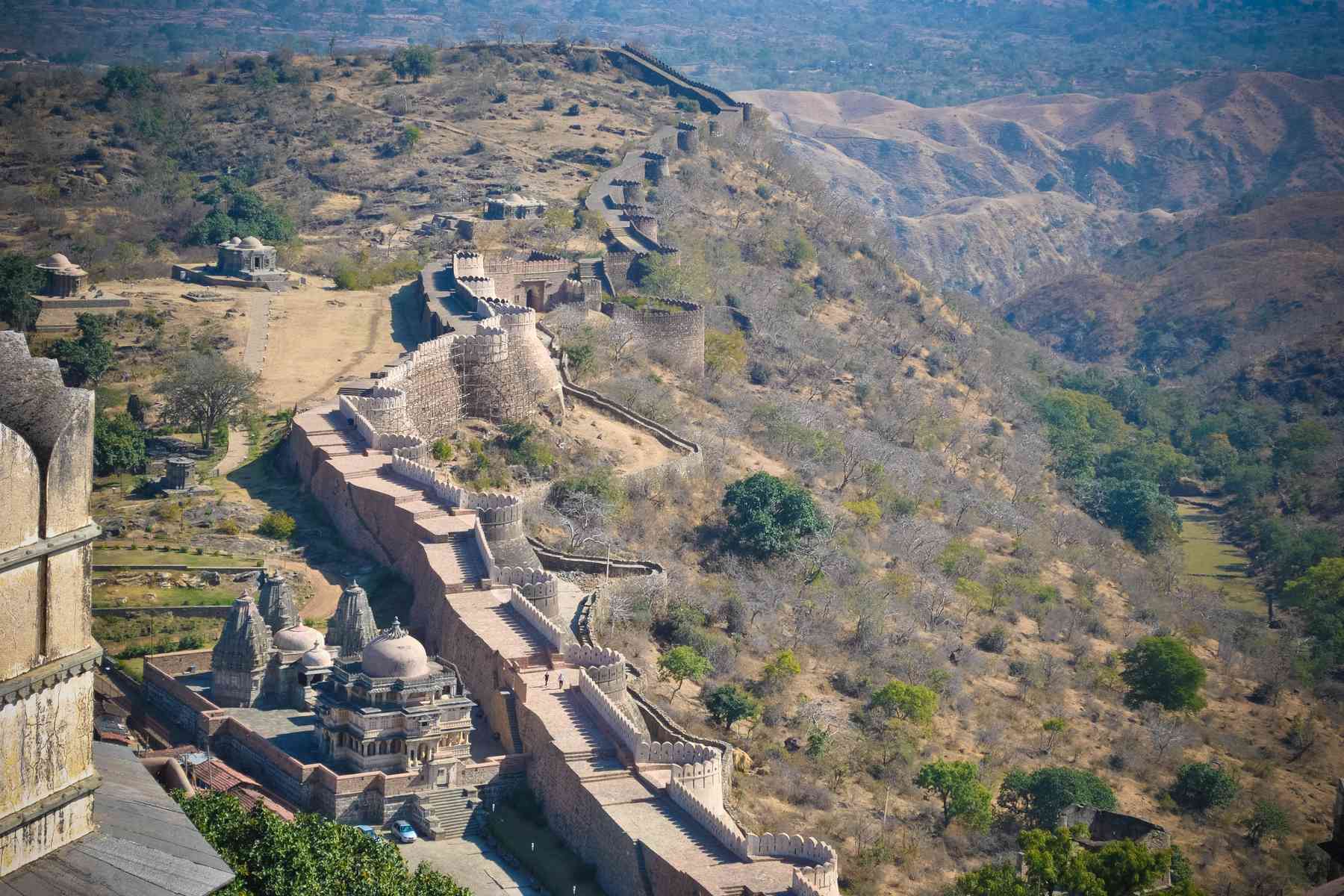
The impregnable fort of India or call it the Great Wall! This fort was never conquered! Do you know the story behind this fort? Welcome to Kumbhalgarh !
Ruins of Mandu
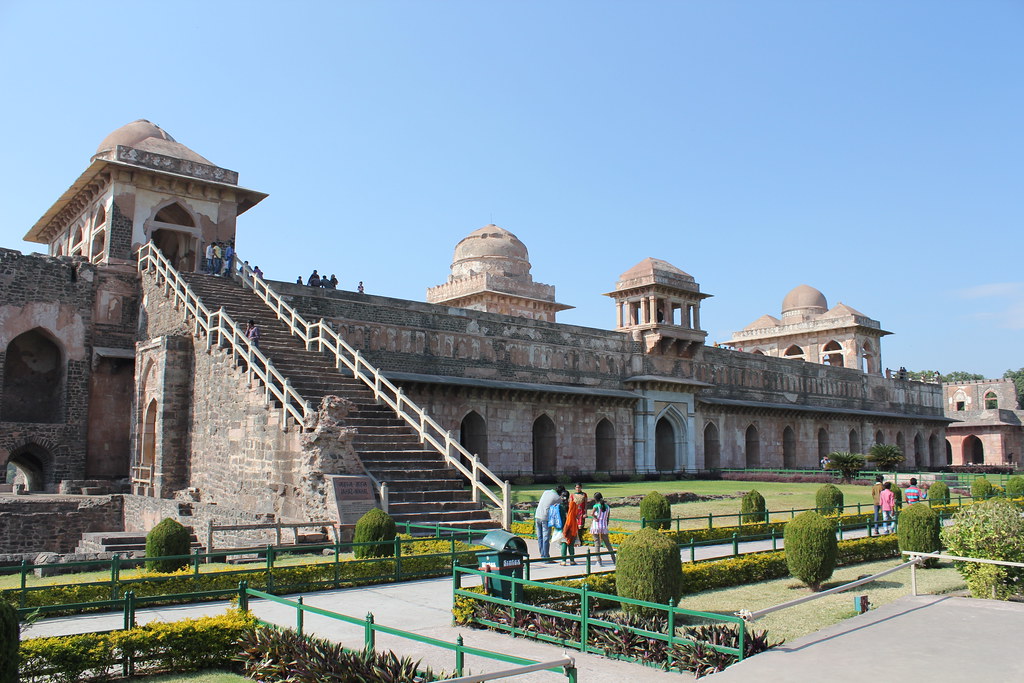
Mandu is not about the ruins of the glorious past. However, it is a bouquet of stories and legends. How should I start? Mandu was the Capital of multiple dynasties. It boasts of a forgotten glorious past. Or should I talk about how it is city that was destroyed multiple times? Maybe the fact that it is an architectural delight? Shall I talk about the ill-fated love story between Baz Bahadur and Roopmati? Read more about the forgotten ruins of Mandu .
Ross Island
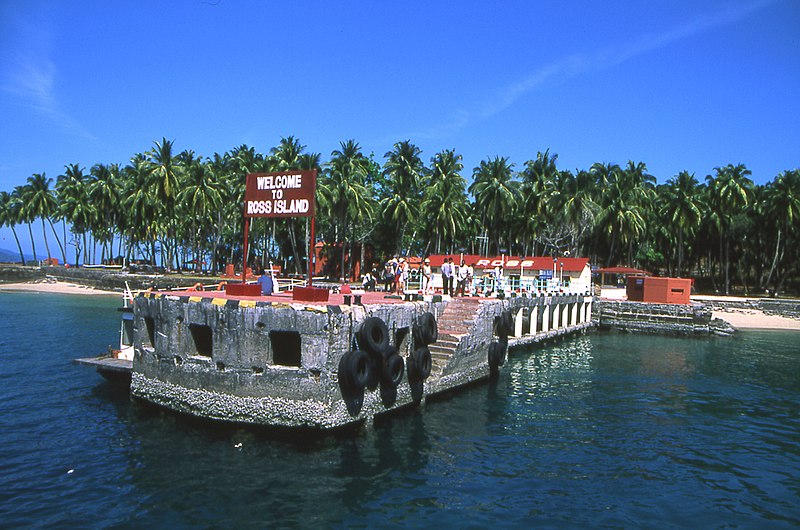
This island can look like a Ghost town to some. Some will travel back in time with a great story ! The local tribes fought the British in the Battle of Aberdeen. They don’t talk about the battle much, but it was a significant one. Click here to read more about Ross Island of the Andamans – also known as Netaji Subhash Chandra Bose Island
Kudakkallu
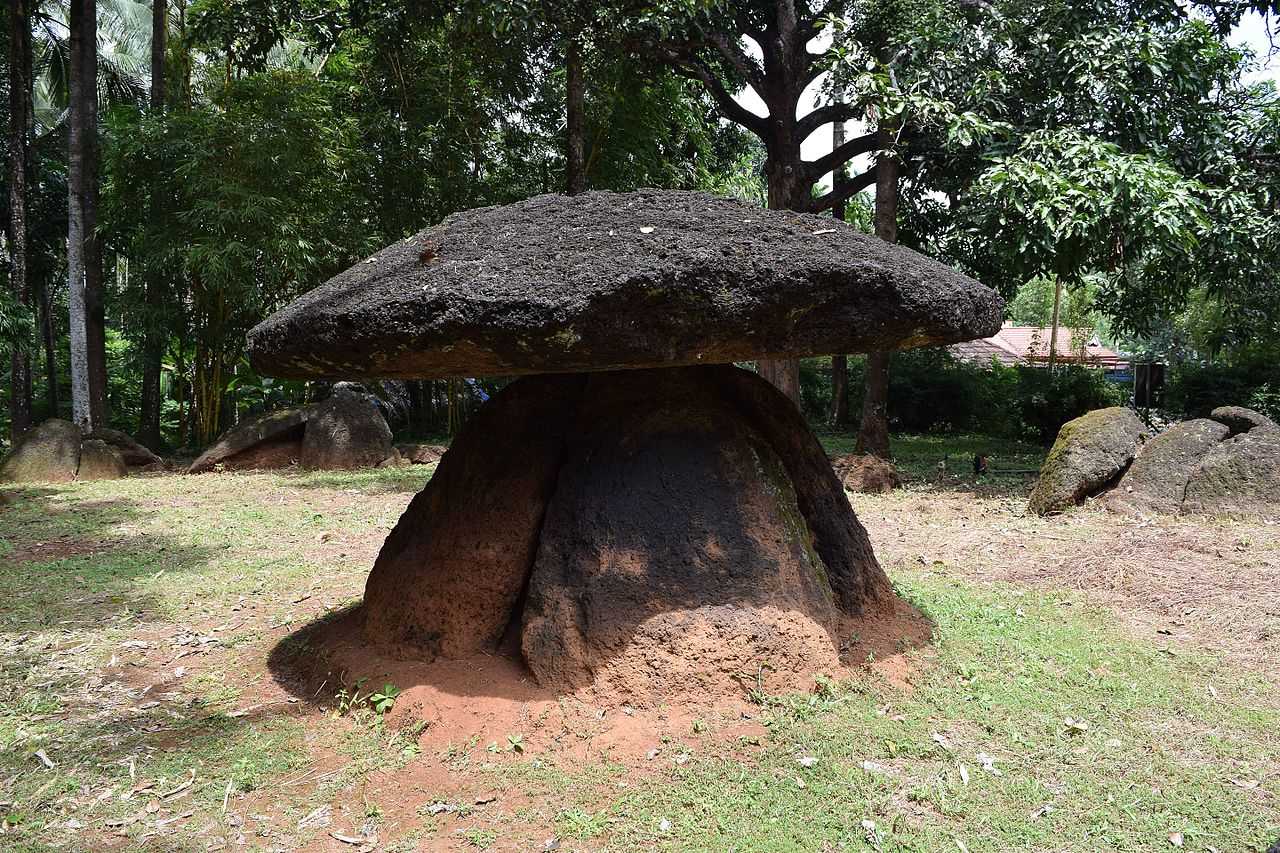
These are some ancient burial sites that date back to the megalithic times. The Kudakallu Parambu is the place to visit in case you are keen to see these ancient ‘Umbrella stones’.
Jantar mantar- the astronomical instruments of India
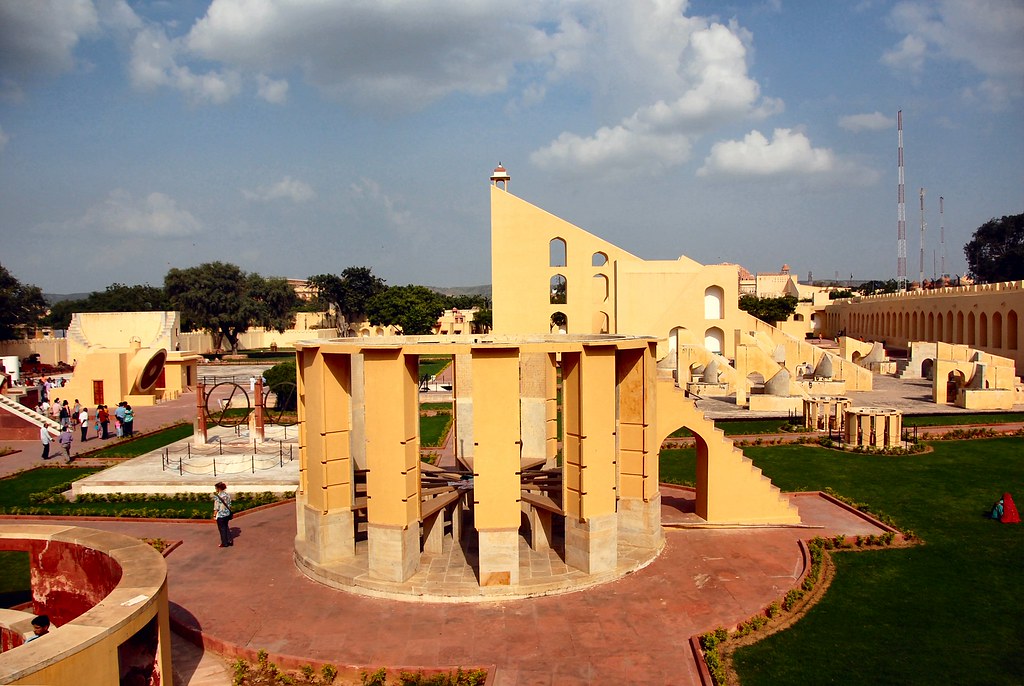
Jai Singh’s passion to create a renaissance in astronomy or marry science and religion? Click here to read more about the history of Jantar Mantar .
Fatehpur Sikri
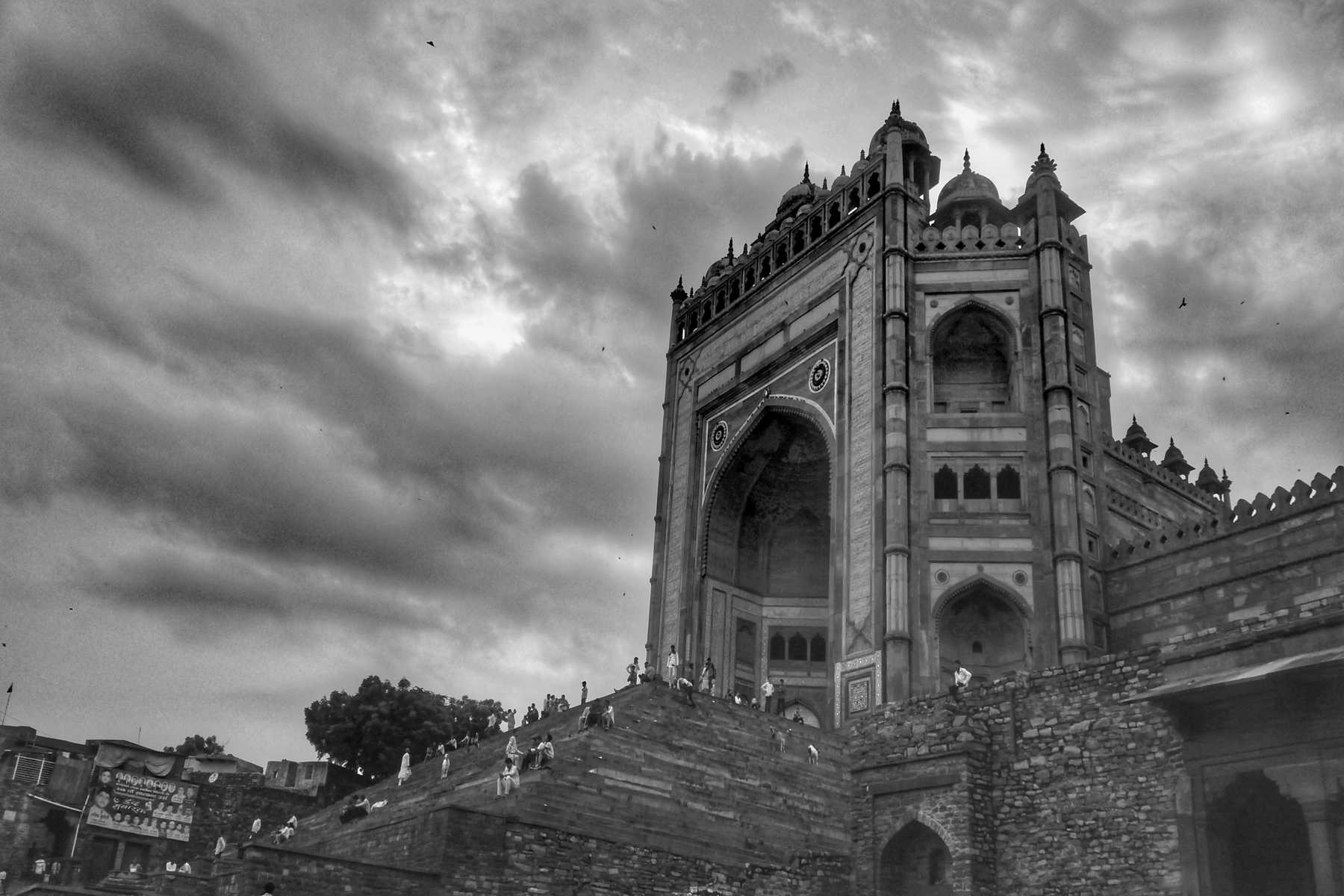
The Taj Mahal as a symbol of love is on most bucket-lists. But the nearby Fatehpur Sikri is as interesting, if not more, than the Taj Mahal. However, it is oft-ignored. Click here to know more about this hidden gem of India calledinteresting facts about Fatehpur Sikri .
Mahabalipuram
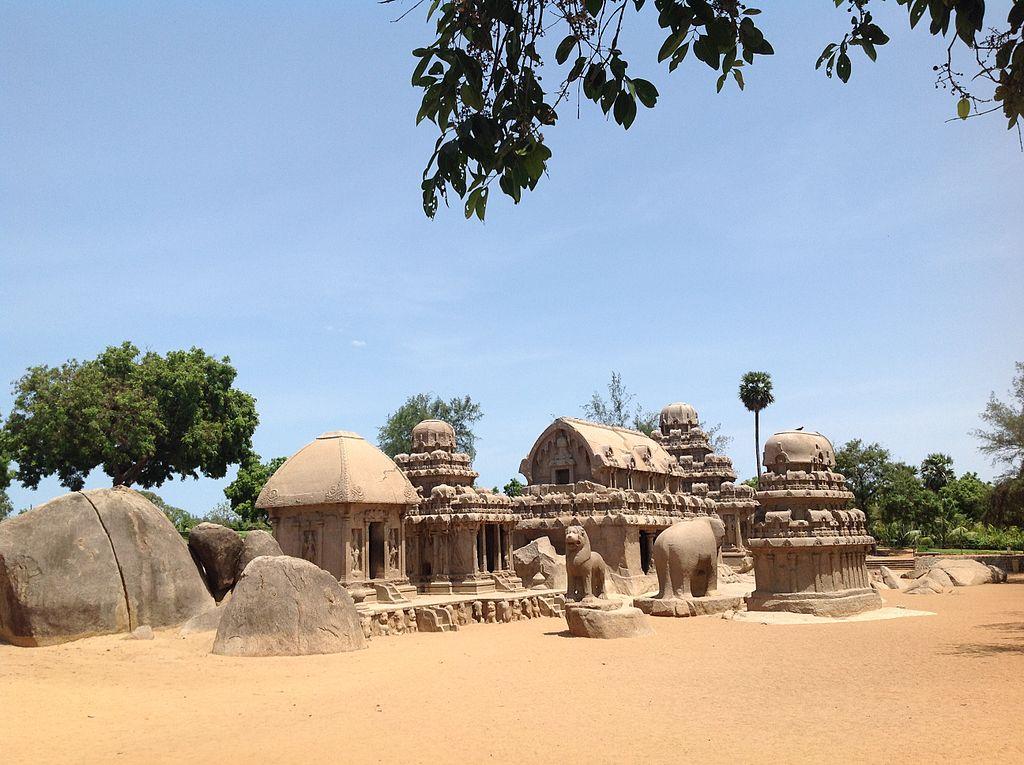
Formerly known as Mamallapuram is immensely popular for its monolithic structures, rock cut temples and of course lovely beaches. The Shore Temple, Panch Rathas and Arjuna’s Penance are some of the most visited heritage sites built during the Pallava period. In addition to the heritage sites, Mahabalipuram and Covelong beaches are perfect places to relax and unwind. Click here to read more about Mahabalipuram – its heritage sites and beaches.
Burma Bazar
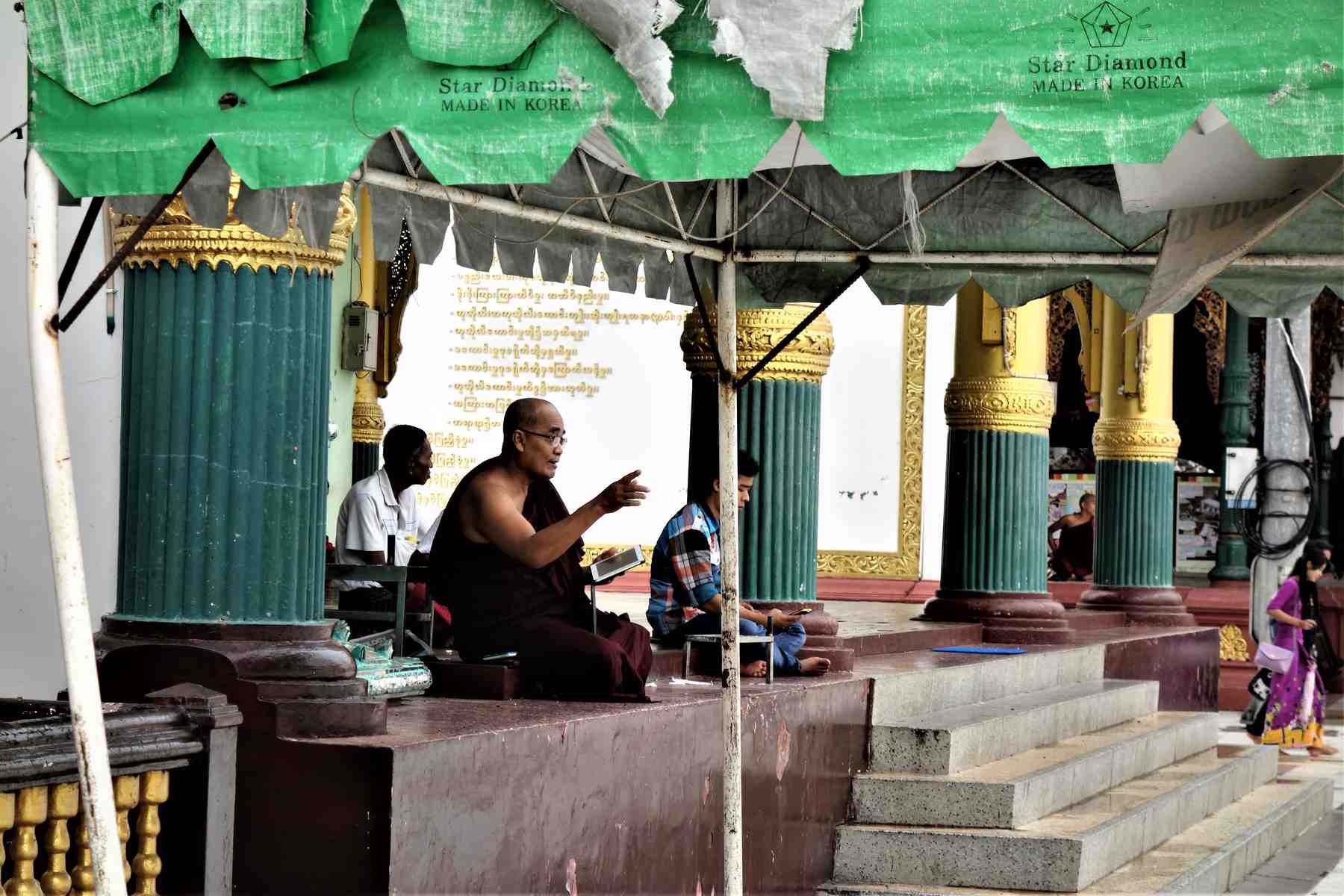
Madras. Burma. There was and is many a connection! One that goes back in recent history. A kind of reverse migration to the one that happened during the hey-days of the British empire. Check out the connection to Burma that exists in Chennai
Ellora Caves and Temples
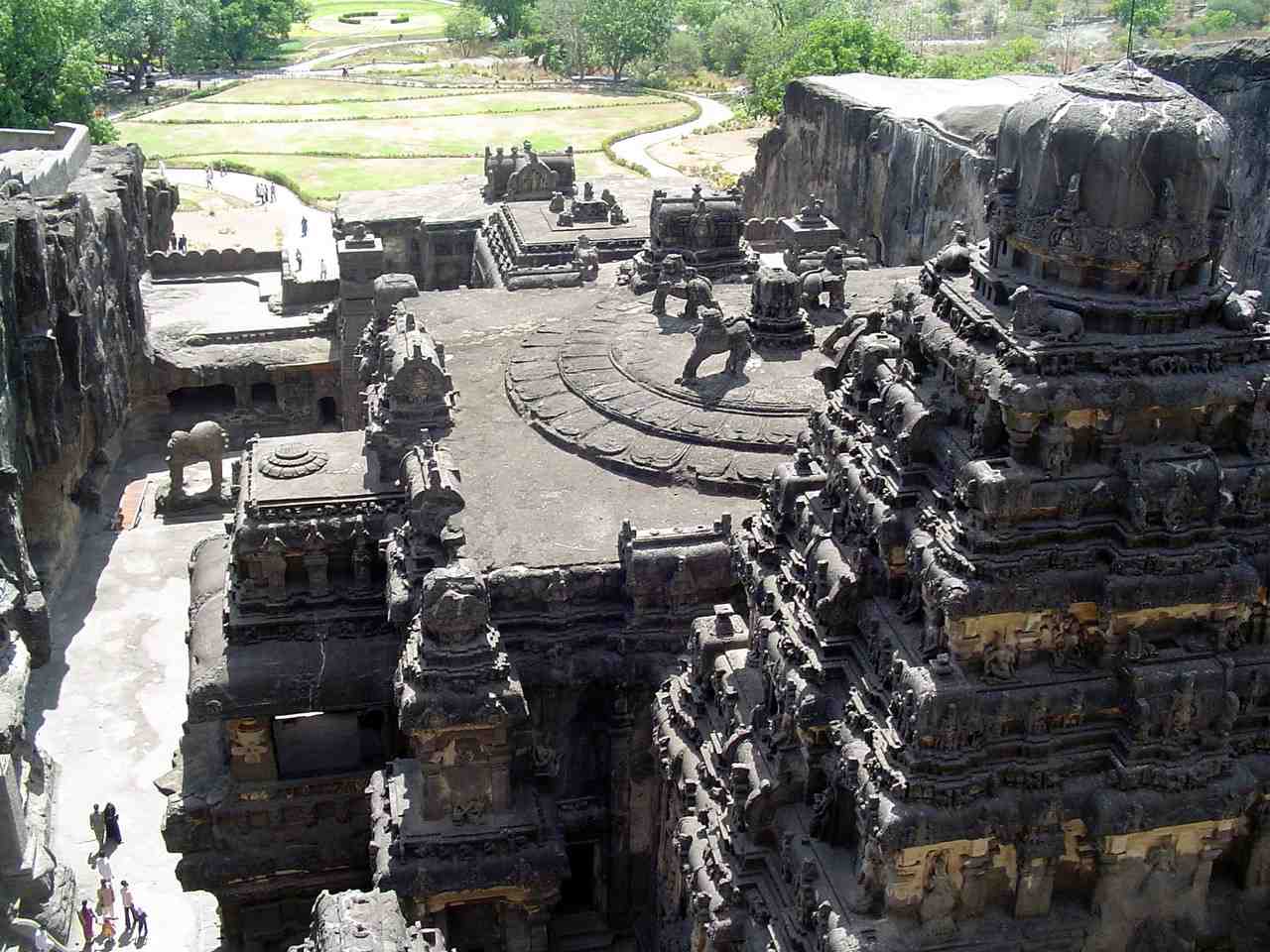
The complex of monolithic temples narrates a story of coexistence. A coming together of different faiths and art forms of ancient India. Click here to read more about the Ellora caves UNESCO heritage site .
Ajanta Caves
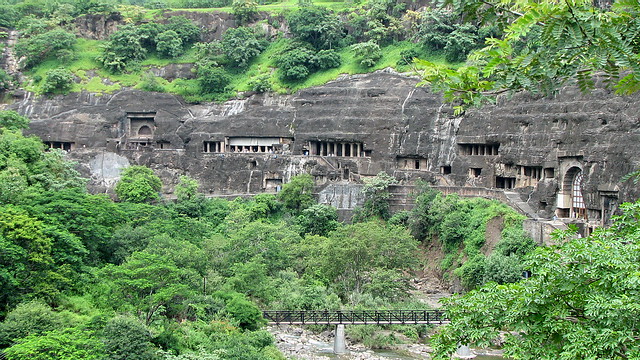
Caves, cave-men and cave-art has always been fascinating. Travelers like Faxian and ancient writers like Abul Fazal have written about these caves. Welcome to the Ajanta caves UNESCO heritage site!
Hampi and the Vijayanagara Kingdom of Karnataka
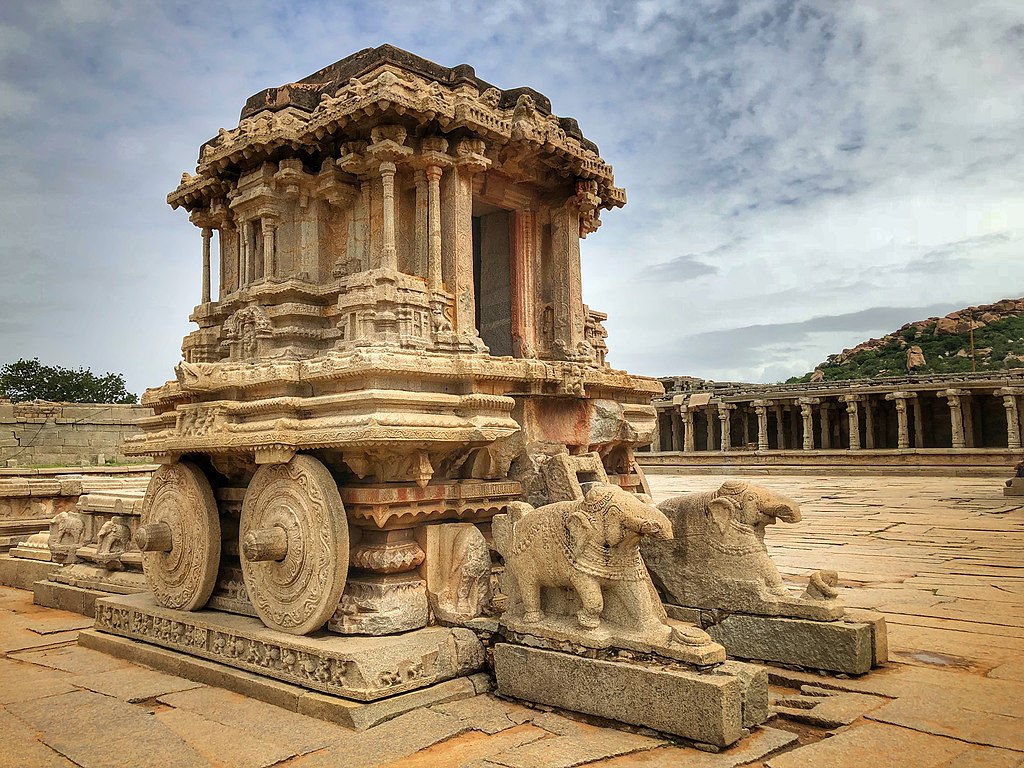
The Vijayanagara Empire with its capital Hampi was a prosperous kingdom. With a huge connection to ancient history. For instance, it had strong connections with the story of the Ramayana. Click here to read more about ruins of Hampi .
Orcha and it’s Cenotaphs
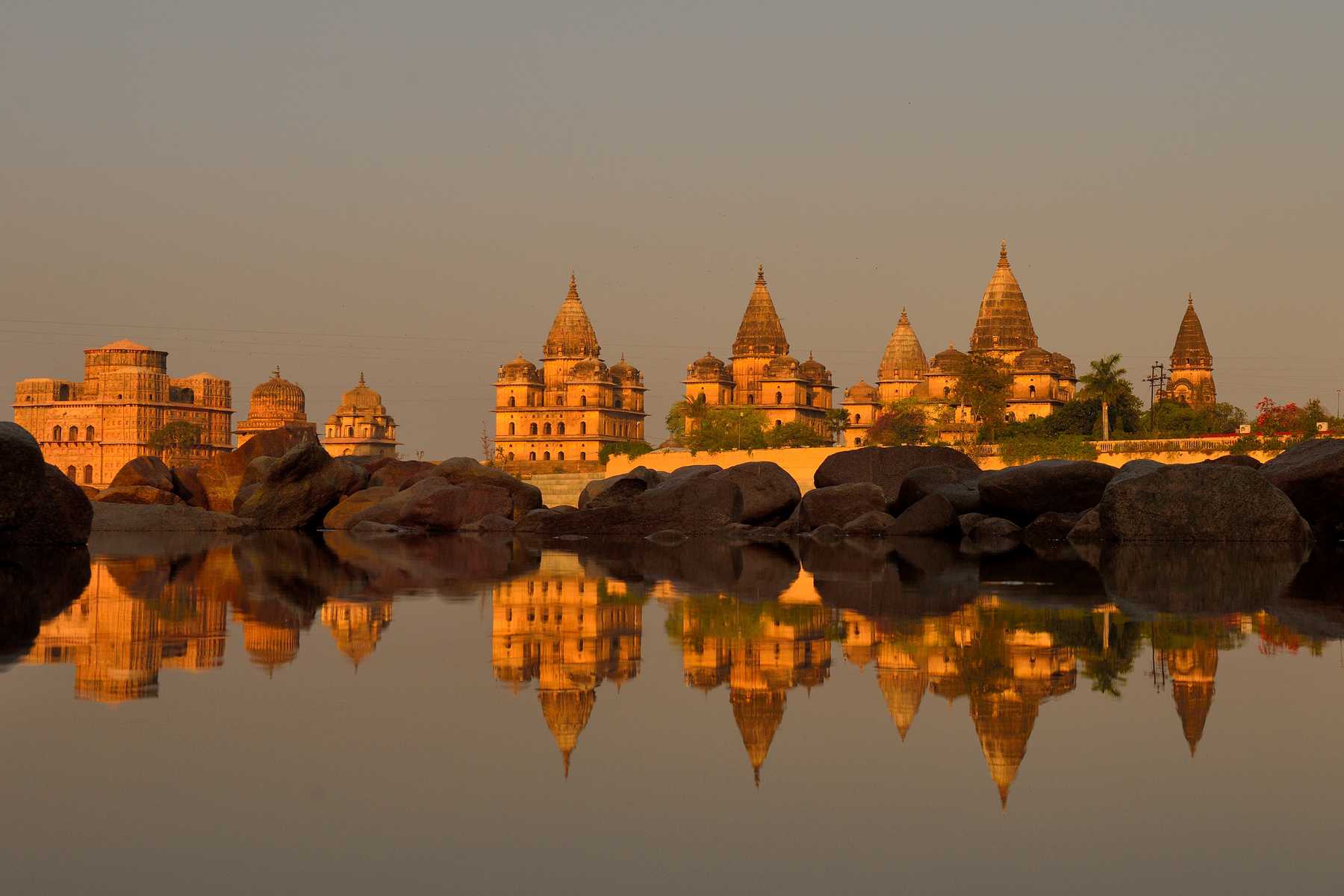
They built the Cenotaphs or Chhatris to make the Kings immortal. And, no – these are not burial sites . Click here to read more about Orccha and its Cenotaphs .
Badami and the Rock Cut Cave Temples
Badami is famous for its rock cut cave temples built between the 5th and 8th century AD. Also known as Vatapi, it remained as the capital for over two centuries. In addition to the cave temples, the popular places of attraction are Mahakuta temples, Bhutanatha temple, Badami Fort, Agastya Lake and Banashankari temple.
Sidi Saiyyed Mosque – the history of the African-Indian connection
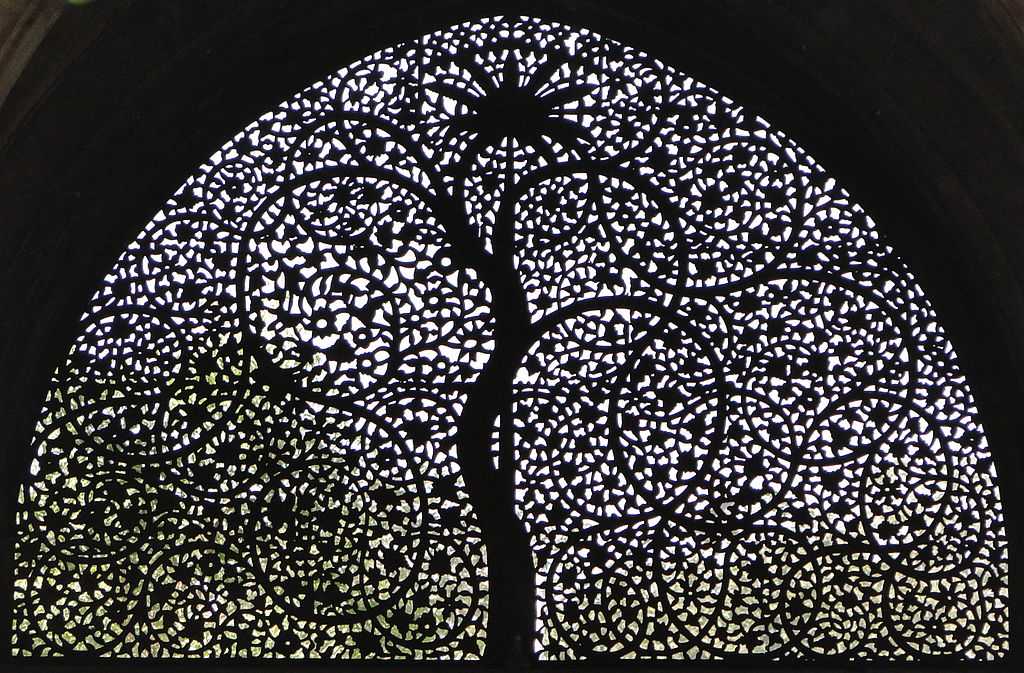 Indian history has an ancient connect with Africa. As warriors and traders. This is a less-known aspect of ancient history. But quite a vital cog in the wheel of Indian history. In fact they still exist as a community in India. And in the art and architecture that they left behind. Read more about the African-Indian connection in the Sidi Saiyyed mosque that has impacted even management education in India!
Indian history has an ancient connect with Africa. As warriors and traders. This is a less-known aspect of ancient history. But quite a vital cog in the wheel of Indian history. In fact they still exist as a community in India. And in the art and architecture that they left behind. Read more about the African-Indian connection in the Sidi Saiyyed mosque that has impacted even management education in India!
Shatrunjaya Hill – The Jain Temples of Palitana

Shatrunjaya Hill is one of the holiest of places for the ‘Swetambara’ Jains. This hill is located at Palitana town in Bhavnagar district of Gujarat. It is a hill where most of the tirthankaras also called jina’s attained nirvana. There are 3500 steps to reach the top of the hill. Distributed across two summits, there are all in all 863 temples making it the largest temple complex in the world. The first tirthankara ‘Rishabha’ delivered his first sermon here.
The Magic of Malana
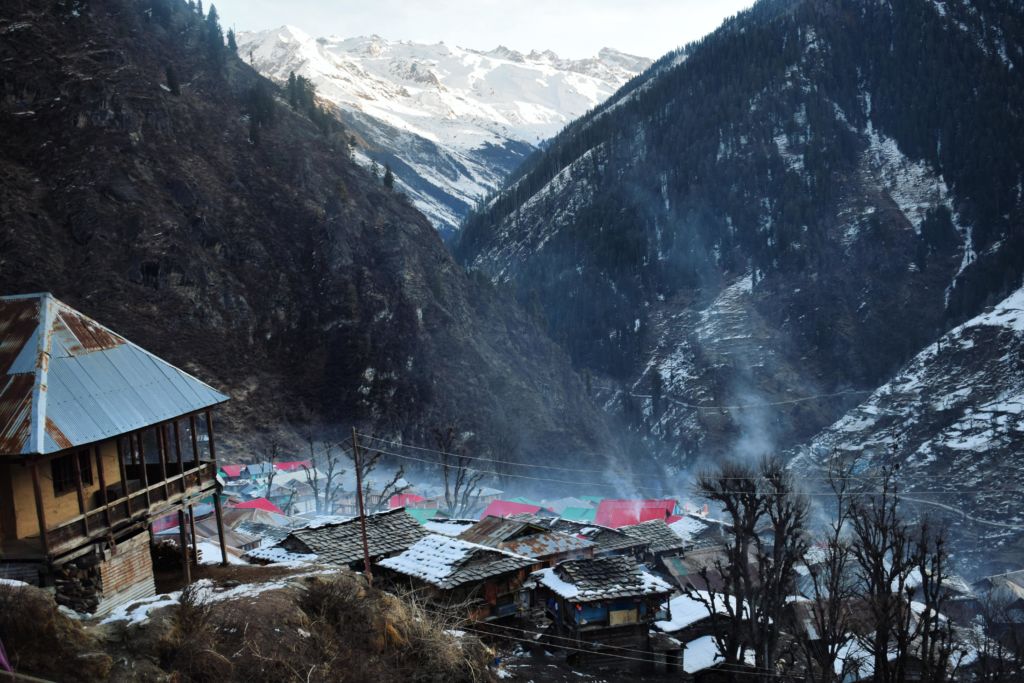
There are always fragments of history that are lost. The remnants of major wars and such events. There a small stories and histories around these that are lost. Malana is an example of this. After Alexander and his band of Greeks left India after the war, a small group of Greek soldiers stayed back. They were forgotten in a small hamlet in the Himalayas. Malana. This lost tribe still exists. With strange rituals, customs and language. Read more on the forgotten history of Malana.
The Chambal Valley and its Dacoits
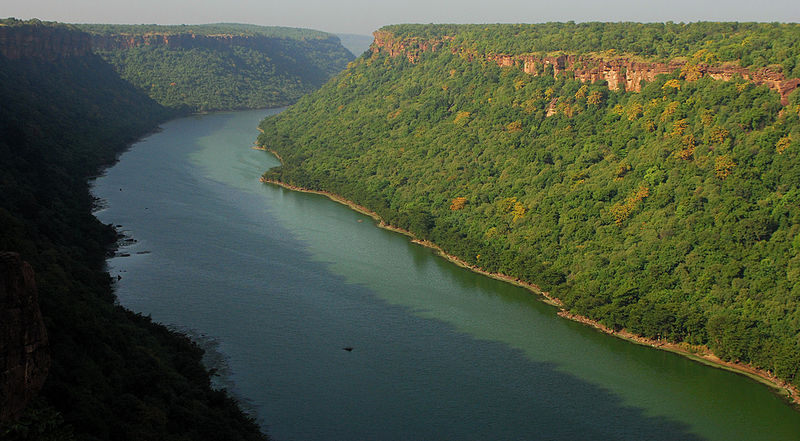 The history of India is not just about monuments and philosophy and wars in ancient times. The recent history is also influenced by myths and legends and ancient history. The feared dacoits of the Chambal Valley are a great example of this. The area stayed undeveloped because of legends and curses. This then became a den of outlaws in recent times. And a fresh issue therefore for being tackled. Read more on the legends and history of the Chambal Valley and its famous dacoits.
The history of India is not just about monuments and philosophy and wars in ancient times. The recent history is also influenced by myths and legends and ancient history. The feared dacoits of the Chambal Valley are a great example of this. The area stayed undeveloped because of legends and curses. This then became a den of outlaws in recent times. And a fresh issue therefore for being tackled. Read more on the legends and history of the Chambal Valley and its famous dacoits.
Bhangarh Fort – a history of bloodshed and ghosts
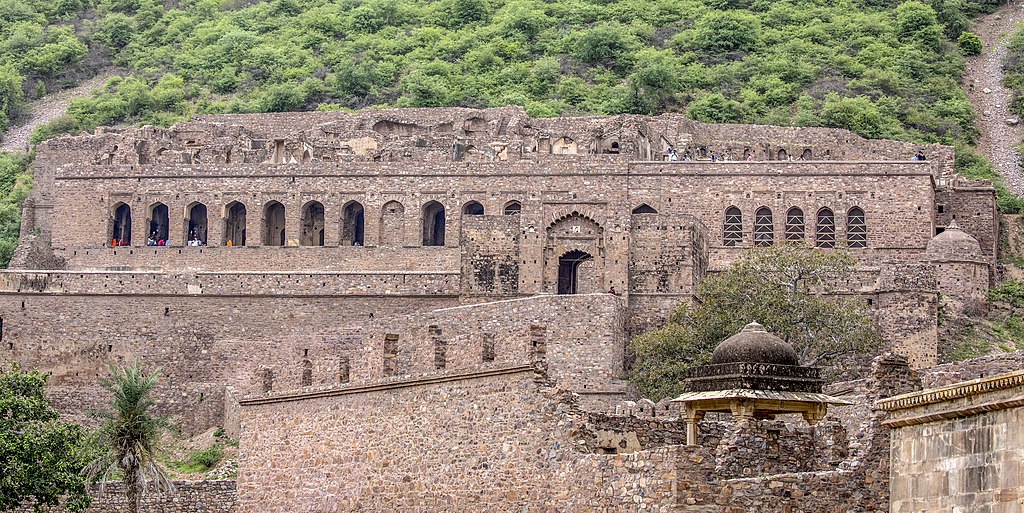
Legends surround the Bhangarh fort in Rajasthan. The history was a bloody one with wars, bloodshed, love, heartbreak and tragedy. The locals abandoned the entire area because of legends of ghosts in the fort. Even now. In fact, the Government has imposed a restriction on movement into the ruins of the fort after sunset and before sunrise! Read about the hauntingly-beautiful and supposedly-haunted Bhangarh Fort.
The Chausath Yogini cult – a chapter that history forgot
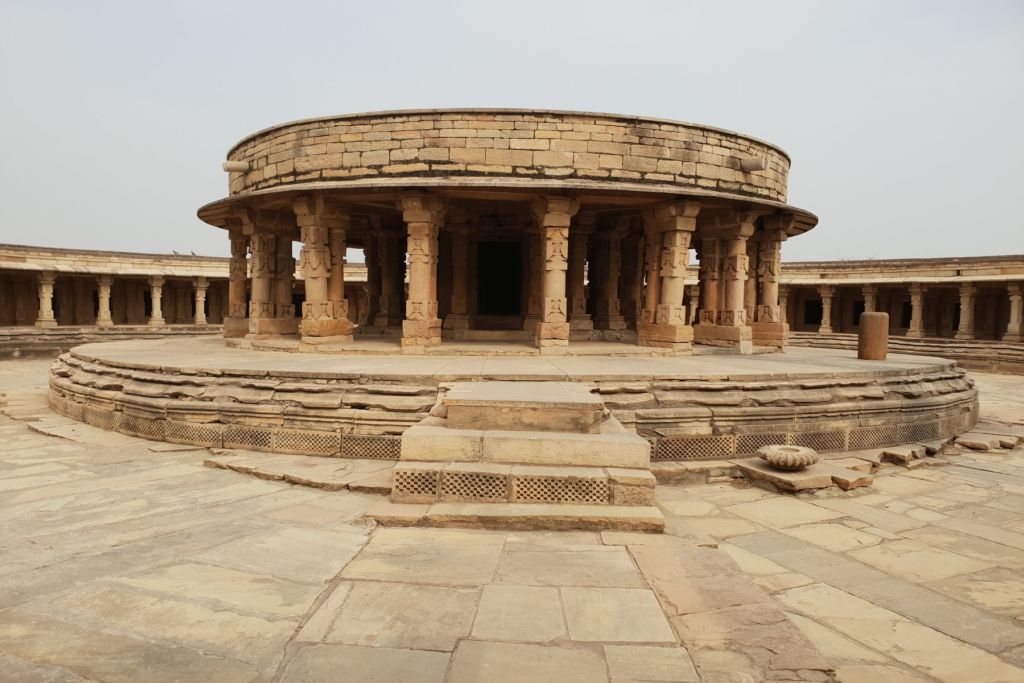
The Chausath Yogini is an ancient cult. The followers worshiped the feminine. A tradition that celebrated the female. Where the Gods and priests were all female. They sacrificed patriarchy at the altar of free-will. However, the traditional Hindu patriarchy and the wave of Victorian morality proved to powerful for this cult to stand against. It was crushed and even wiped off the collective memory of Indians. Here is a short primer on the forgotten Chausath Yogini cult of India.
Varanasi – a city that is older than History
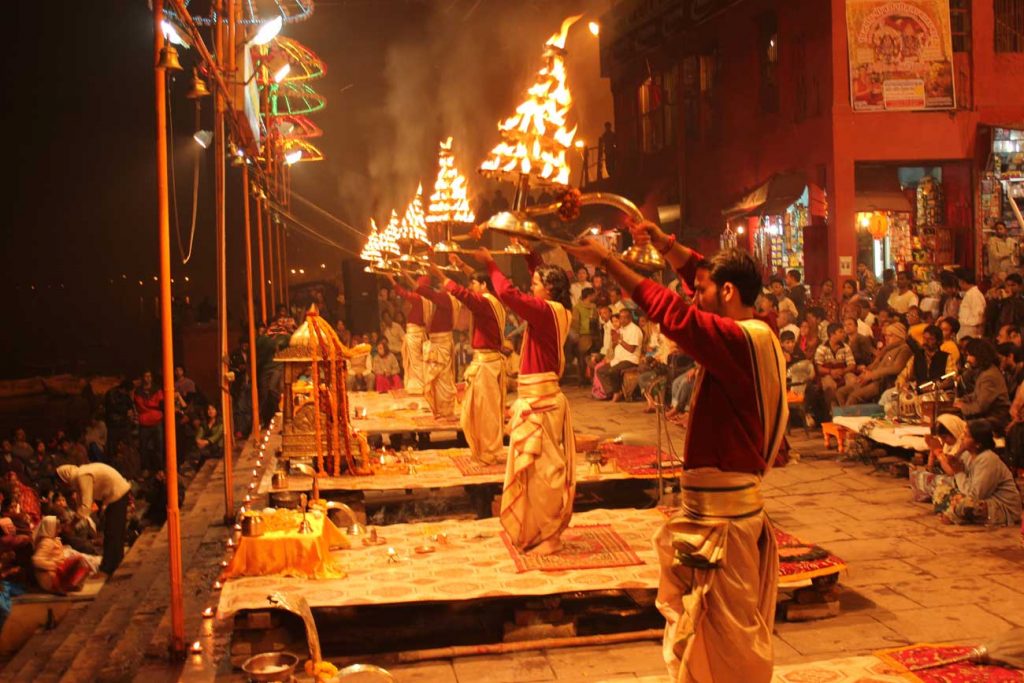
Now that we have looked at a few historical places, let’s look at Varanasi. It is a city that is reputed to exist from the beginning of time. A city that is older than history itself. This modern city exists on many levels. It is modern, a commercial hub and yet has a great religious significance. It is also the spiritual capital of India and secretes a deep core of philosophy. Read an attempt to peel the layers of mythology, philosophy and spirituality in Varanasi like an onion.
Ajmer Sharif – Dargah of Moinuddin Chisti
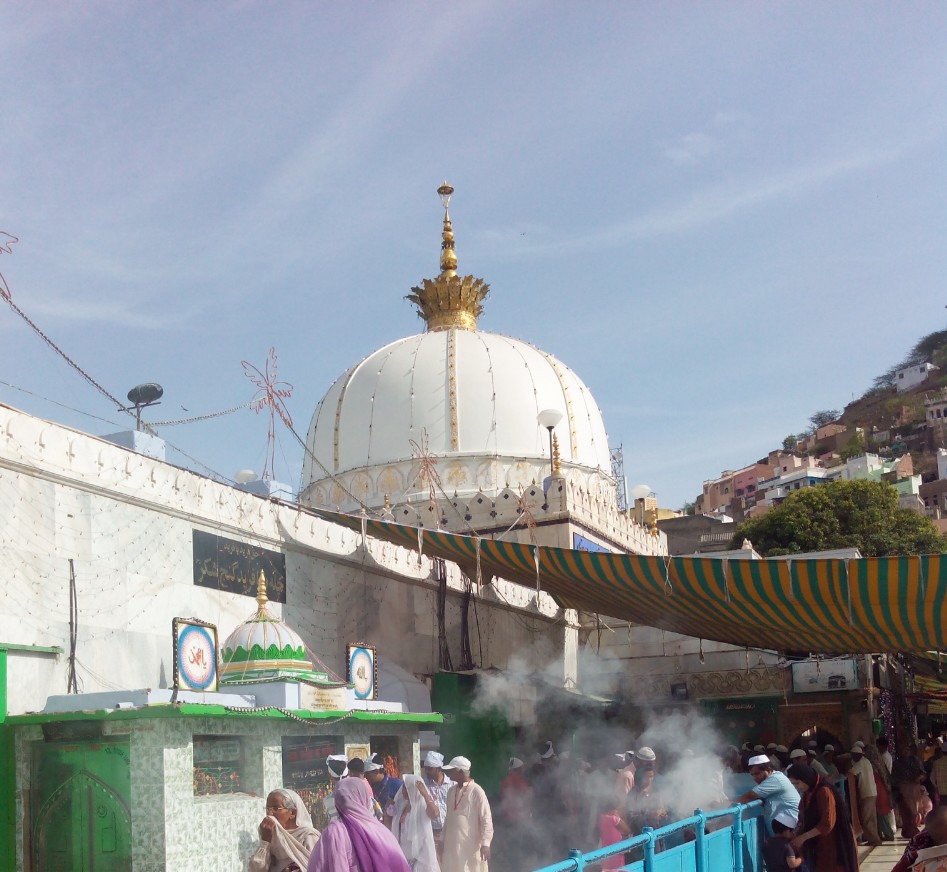
Ajmer Sharif is a popular pilgrimage site for Muslims in India. Located in Rajasthan, this shrine houses the tomb of Moinuddin Chisti. Moinuddin Chisti was a Sufi saint from Persia. He arrived in Ajmer in 1192 and became popular for his secular preaching. This dargah welcomes people of all faith and religions. The Mughal rulers visited and worshiped here.
Santhome Cathedral
The Santhome Cathedral in Chennai is believed to be built over the tomb of Saint Thomas. Saint Thomas was one of the twelve apostles of Jesus. The Portuguese built the church in the 16th century. The British rebuilt the church in the 18th century and elevated the status to a cathedral. The cathedral ranks as a minor basilica and one amongst 26 basilicas in India.
The Ancient Kapaleeswarar Temple
Dedicated to Lord Shiva and Goddess Parvathi, the Kapaleeswarar Temple is located in Mylapore. The city of Mylapore is known as Vedapuri or Sukrapuri. Vedapuri because the Vedas prayed to Lord Shiva here. Sukrapuri because Sukracharya prayed to Lord Shiva here to regain his eyesight. There are references to this temple in the early tamil texts of the 6th century. The Portuguese destroyed the temple in the 16th century. Rebuilt in the 16th century, the current temple exists a km away from the original location.
Belur, Halebidu and Shravanabelagola
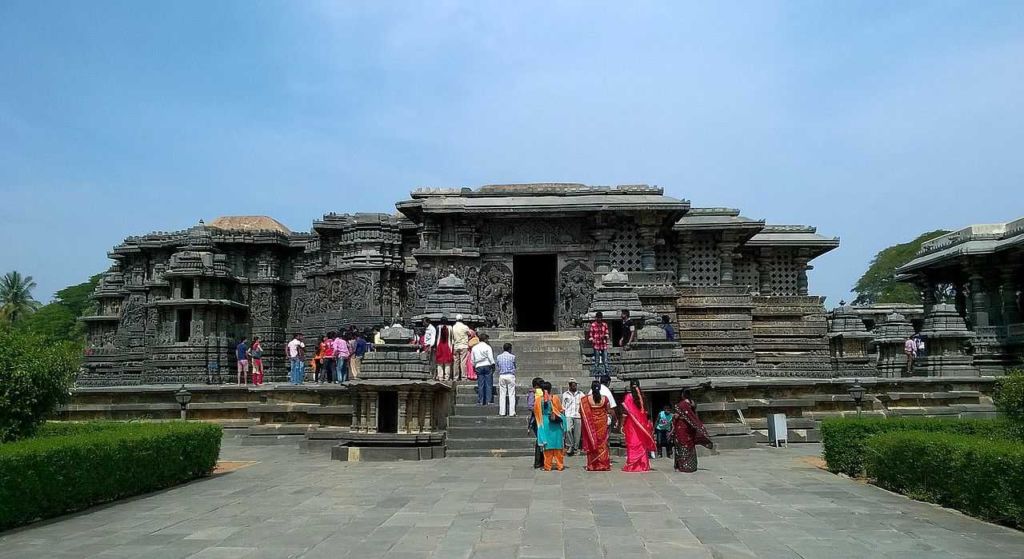
The temples of Belur and Halebidu are simply amazing. Built by the Hoysalas in the early 12th century, these temples took over 100 years to build. Belur and Halebidu were capitals of the Hoysalas. The temples were plundered by Malik Kafur in the 14th century. Malik Kafur was the commander of the Deccan Sultanate ruler Alauddin Khilji. After the Hoysalas, this region came under the rule of the Vijayanagara dynasty. Shravanabelagola is an important pilgrimage site for Jains. This site sports the largest monolithic statue (Bahubali) in the world. Bahubali also called as Mahavira is the 24th tirthankara for the Jains.
The Grand Meenakshi Amman Temple

The Meenakshi Amman temple is the largest temple complex in Tamilnadu. It dates back to the 1st century and also has a mention in the early tamil texts of the 6th century. This temple was ransacked by Malik Kafur in the 14th century. Malik Kafur was the commander of Allaudin Khilji’s army in the Delhi Sultanate. Later on the Vijayanagara empire took over the region and restored the temple. The towering gopurams and mandapams of this temple are the highlight of this architectural marvel.
Mysore – The Royal Palace and Srirangapatna
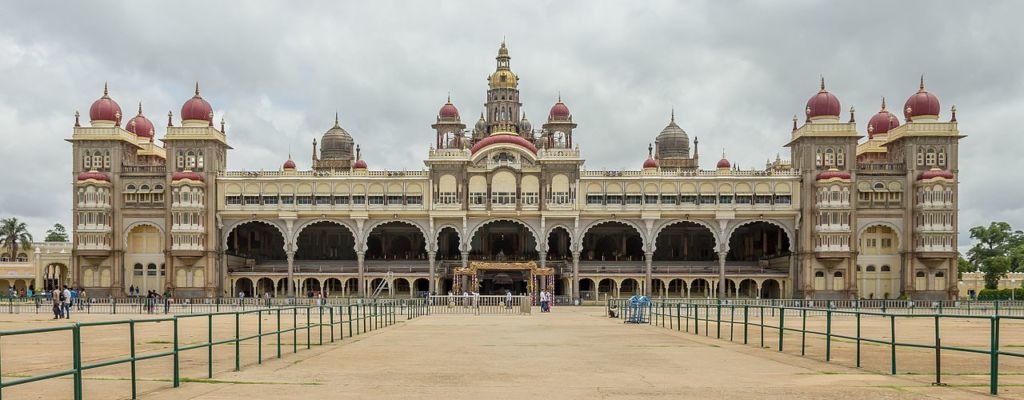
Mysore is famous for its palaces and historic sites around Srirangapatna. Chamundi Hills, St. Philomena Church, Mysore Zoo are some of the major attractions in Mysore. Srirangapatna was the capital city under the rule of Hyder Ali and Tipu Sultan. Known as the Tiger of Mysore, Tipu Sultan fought many a battle with the British. Ranganathaswamy temple, Daria Daulat, Gumbaz, Nimishamba temple, Srirangapatna fort, Jama Masjid and Bailey’s Dungeon are some of the many attractions in Srirangapatna.
The Mahabodhi temple at Bodh Gaya
The original Mahabodhi temple was constructed by emperor Ashoka in the 3rd century. It is here where Lord Buddha meditated under the Bodhi tree and attained nirvana. The Deccan Sultanate rampaged the current 7th century temple and its surroundings in the 11th century. The temple lay neglected over six centuries and finally restored by the British in 1880. Considered to be the holiest of sites for the Buddhists, Bodh Gaya is a must visit when visiting the north of India especially the state of Bihar.
The Golden Temple of Amritsar
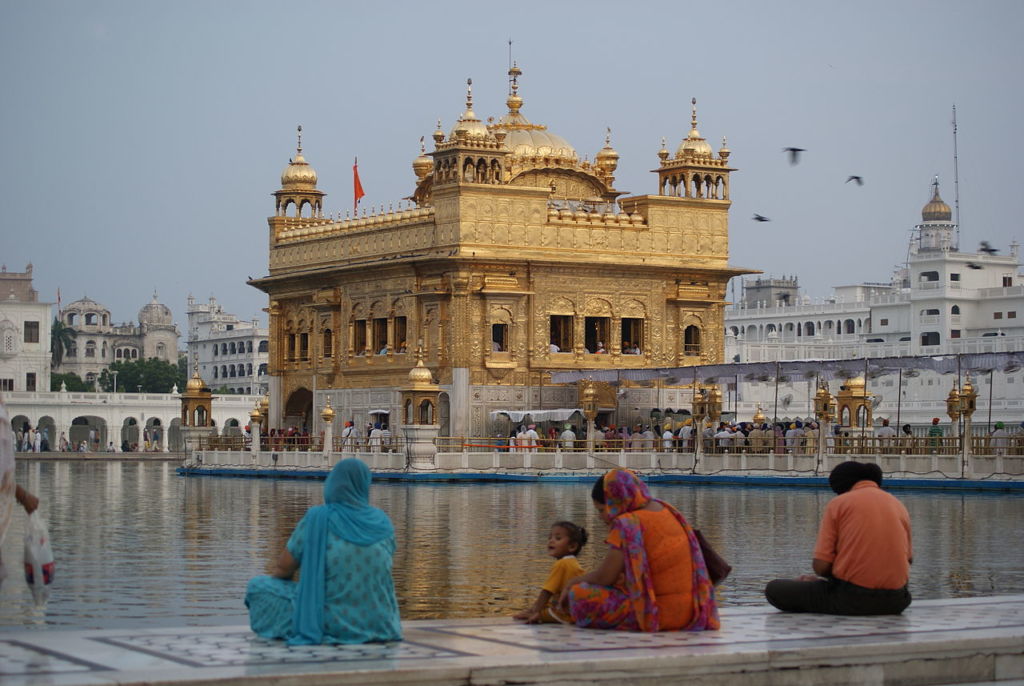
Guru Arjan – the fifth guru championed the building of the temple in 1589. Made up of brick, this temple took 8 years to complete. The afghan and mughal forces destroyed the temple many a times and rebuilt again. Maharaja Ranjit Singh (founder of the Sikh empire) built the present day Golden temple in 1830. This temple/gurudwara is the holiest place for Sikhs. The water tank – Amrit Sarovar surrounding the temple is said to have healing powers. Pilgrims who visit this temple bathe in the sacred water tank.
Fontainhas – Portuguese base in India
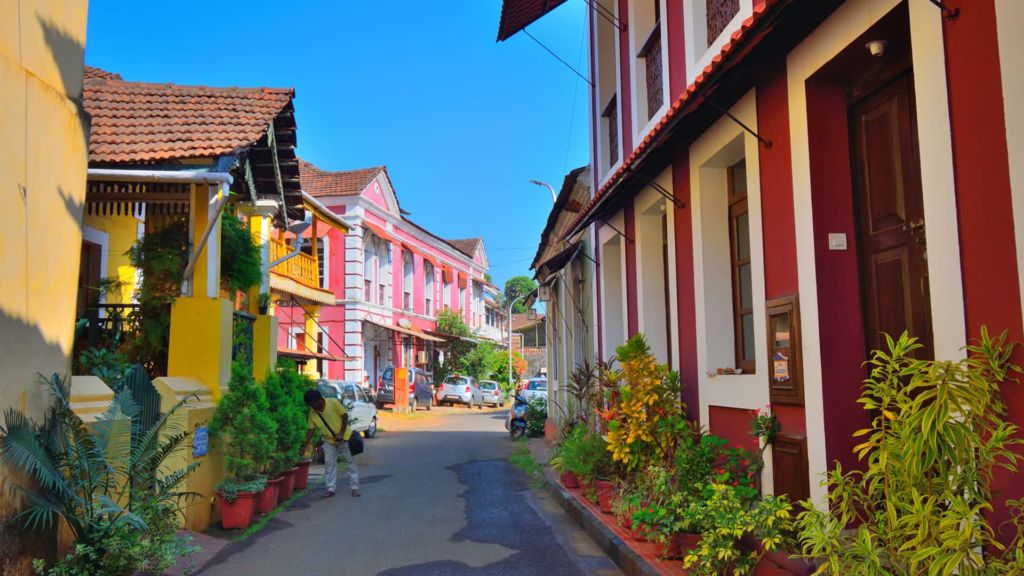
The Portuguese ruled in India for 450 years and controlled Goa until 1961. Due to the pandemic in the 18th century, Portuguese moved their base to Panjim. Antonio Joao de Sequira an expatriate returned to Goa from Mozambique in 1881. He helped reclaim the land of Fontainhas as a coconut plantation from it being a mangrove swamp. Fontainhas then developed rapidly to be a residential place for its officers. With colorful houses, cottages, bakeries and cobbled streets – Fontainhas is Asia’s largest Latin Quarter!
Indian History has more such stories and places
Did these intrigue you? There are many more stories in India… Come along with us. Let us take you on a different side of India – the historical India. It is one that will astound, intrigue and wow you. It has cast a spell on most visitors who come back to explore more and more of this ancient land that revels in its glorious past…
Interested? Write to us and we can help craft an experiential travel itinerary for you.
India is not just about history. In fact, there are many more facets to this ancient land – culture, spirituality, mystery, nature, wildlife and so on. Read more about the other exciting places to visit in India.

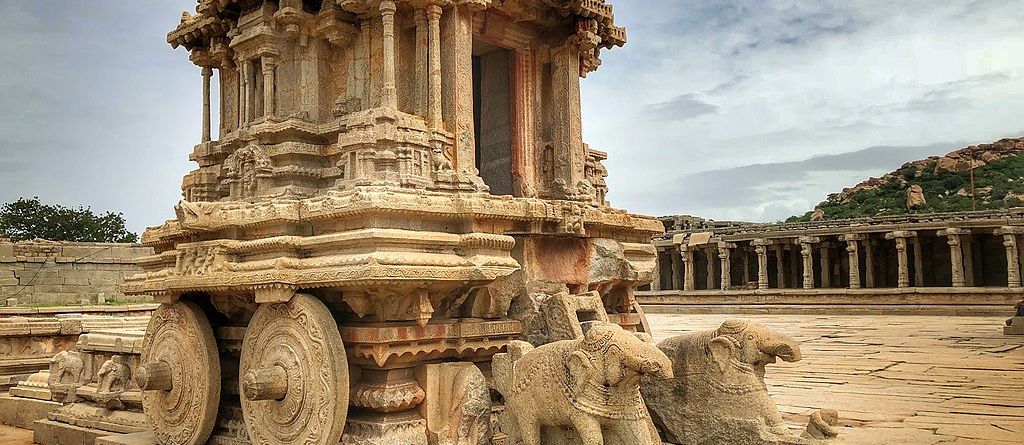
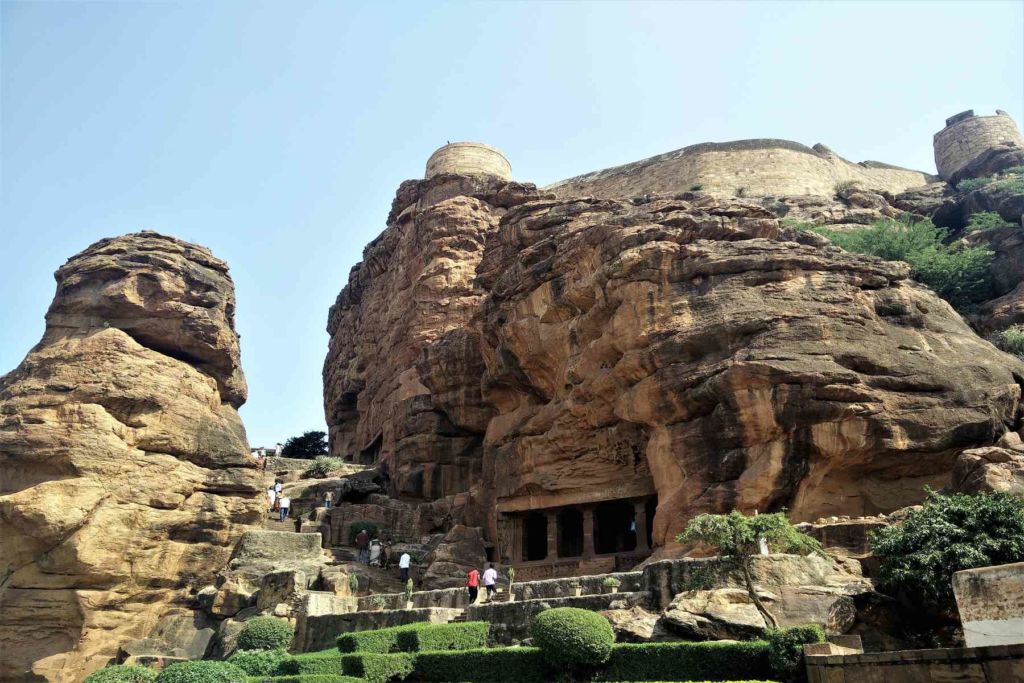
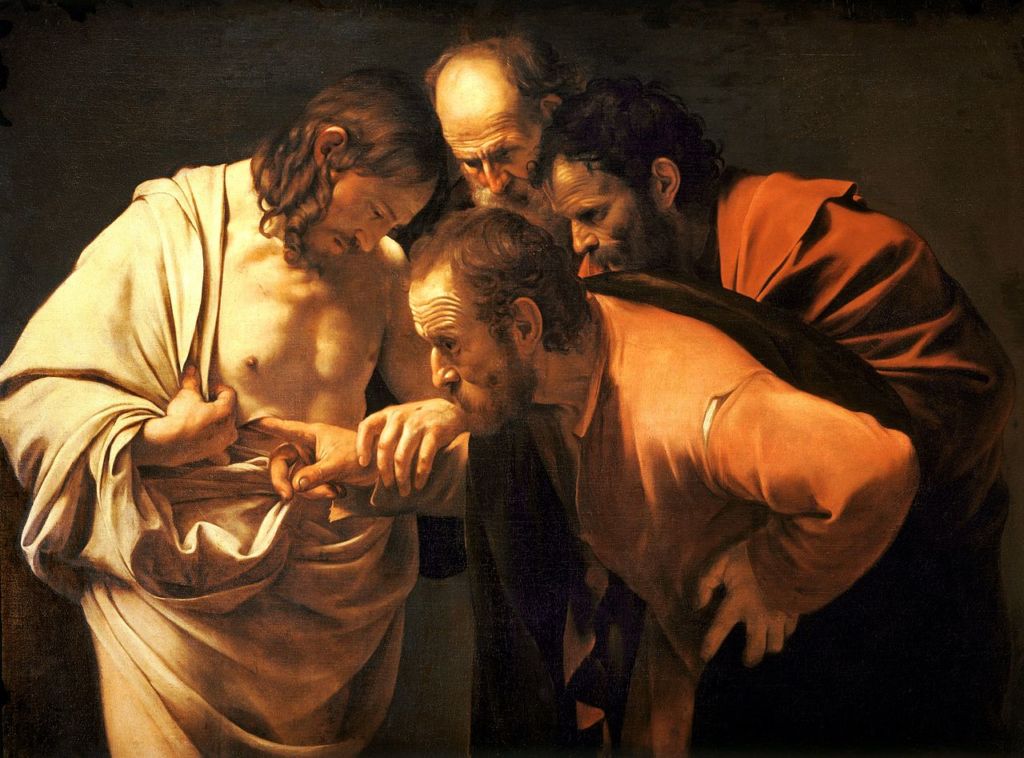
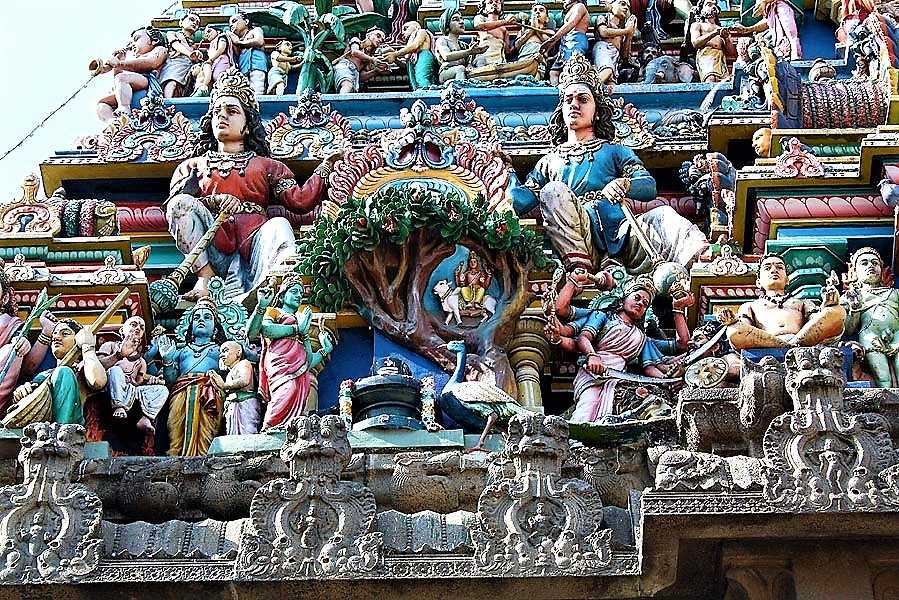
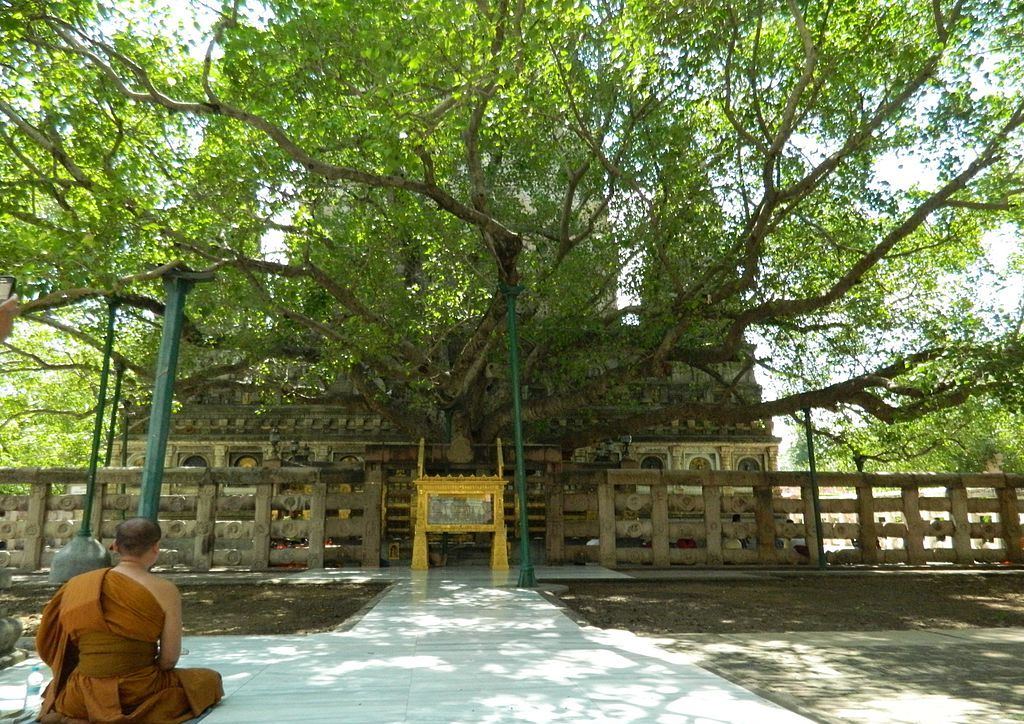
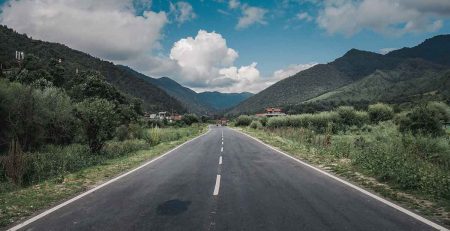
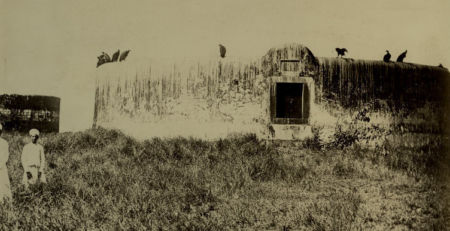
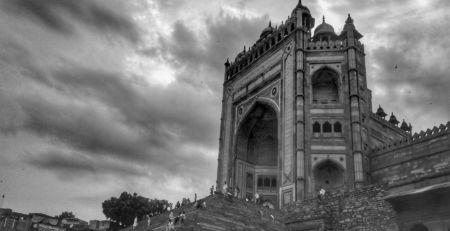
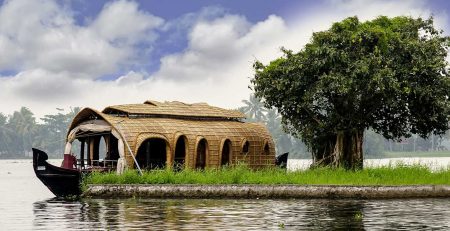
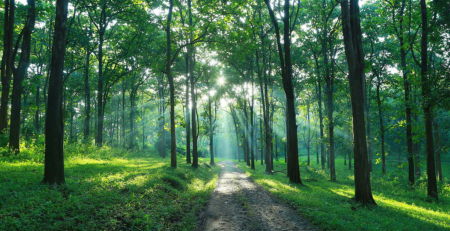
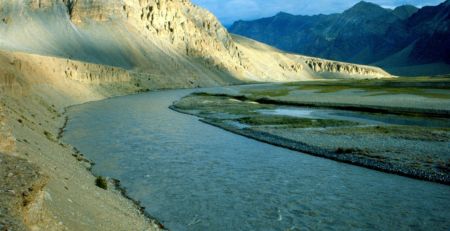


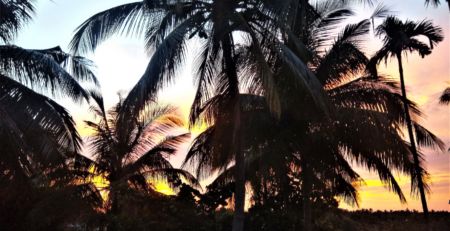
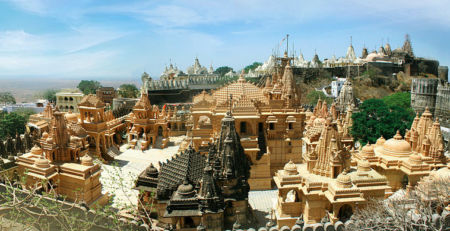
Leave a Reply